
The Focke-Wulf Fw 44 Stieglitz (Goldfinch) is a twin-seat biplane designed and produced by the German aircraft manufacturer Focke-Wulf. It was the company's first major international success.

The Siemens-Schuckert D.IV was a late-World War I fighter aircraft from Siemens-Schuckert (SSW). It reached service too late and was produced in too few numbers to have any effect on the war effort.
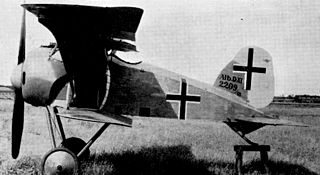
The Albatros D.XI was a German single-seat fighter sesquiplane first flown in February 1918. It was the first Albatros fighter to use a rotary engine, in the form of the 120 kW (160 hp) Siemens-Halske Sh.III, and also featured a new wing construction with diagonal struts from the fuselage replacing traditional wire bracing.

The Heinkel He 72 Kadett (Cadet) was a German single-engine biplane trainer of the 1930s. It was known to its pilots as the Zitterrochen as it shook madly.
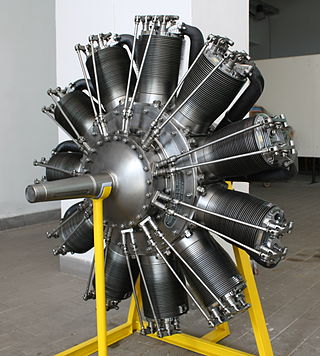
The Siemens-Halske Sh.III was an 11-cylinder, air-cooled counter rotary engine developed in Germany during World War I. The engine was a development of the earlier 9-cylinder Siemens-Halske Sh.I.
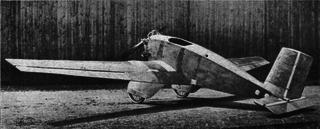
The Albatros L 59 was a single-seat German utility aircraft of the 1920s. It was a single-engine low-wing cantilever monoplane with large, spatted wide track undercarriage attached, unusually for the time not to the fuselage but to the wing roots. The whole aircraft was covered in 3-ply.
The Albatros L 60 was a two-seat German utility aircraft of the 1920s developed from the Albatros L 59. It was a single-engine low-wing cantilever monoplane with large, spatted undercarriage.
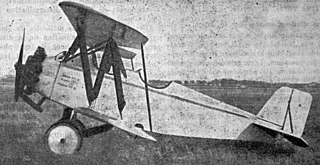
The Albatros L 68 Alauda was a two-seat German trainer aircraft of the 1920s. It was a single-engine biplane of conventional configuration that seated the pilot and instructor in tandem, open cockpits. The wings were of unequal span and had a pronounced stagger.
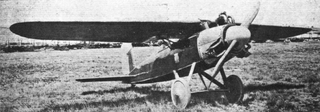
The Albatros L 69 was a two-seat German parasol monoplane racing and training aircraft of 1925. It was a single-engine parasol-wing monoplane of conventional configuration that seated the pilot and passenger in tandem, open cockpits. It was advertised as a trainer, however contemporary reports dismissed this due to the difficulty in accessing the front cockpit, and the designers' focus on performance.
The Albatros L 79 Kobold was a single-seat German aerobatic aircraft of the 1920s and 1930s. It was a single-bay biplane with unstaggered, equal-span wings that had a symmetrical airfoil intended to ensure performance during inverted flight.

The Ambrosini SAI.10 Grifone ("Griffon") was a military trainer aircraft produced in small numbers for the Italian Regia Aeronautica early in World War II.

The Arado S I was a biplane trainer built in Germany in 1925. The first of three prototypes was powered by a Bristol Lucifer radial engine, while the other two Arado S.Ia aircraft were fitted with the Siemens-Halske Sh 12. The Siemens-Halske Sh 11 powered the Arado S III, a virtually identical aircraft of which only a single prototype was constructed and sold to Turkey.

The Udet U 12 Flamingo was an aerobatic sports plane and trainer aircraft developed in Germany in the mid-1920s.

The Pfalz D.VIII was a German World War I fighter aircraft.
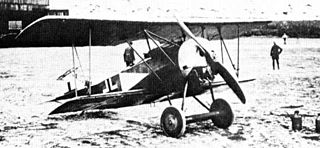
The Fokker D.VI was a German fighter aircraft built in limited numbers at the end of World War I. The D.VI served in the German and Austro-Hungarian air services.

The Siemens-Schuckert D.I was a single-seat fighter built by Siemens-Schuckert Werke in 1916. It was a German copy of the French Nieuport 17 that was obsolete by the time it was available in numbers, so that it served mainly as an advanced trainer.
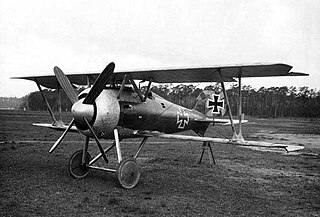
The Siemens-Schuckert D.III was a German single-seat fighter built by Siemens-Schuckert Werke. The D.III was a development of the earlier Siemens-Schuckert D.IIc prototype. The D.III was an (nearly) equal-span biplane powered by a 160 hp (119 kW) Siemens-Halske Sh.III bi-rotary engine. Idflieg placed an order for 20 aircraft in December 1917, followed by a second order of 30 aircraft in February 1918.

The Dornier Libelle, also designated Do A, was a German open-cockpit, all-metal, parasol wing, monoplane flying boat aircraft, with partly fabric-covered wings. There was three versions of the seaplane version; the prototype, first version, and improved version. A landplane version, built without sponsons and fitted with a fixed tailwheel undercarriage was produced as the Dornier Spatz.

The Fokker S.IV was a military trainer aircraft produced in the Netherlands in the mid-1920s. It was a conventional, single-bay biplane with staggered wings of unequal span braced with N-struts, essentially a radial-engined development of the S.III. The pilot and instructor sat in tandem, open cockpits and the undercarriage was of fixed, tailskid type with a cross-axle between the main units. The Royal Netherlands Army Aviation Group purchased 30 examples and used them right up to the German invasion of the Netherlands in 1940. On 14 May that year, a few surviving S.IVs escaped to France alongside some S.IX trainers, but never flew again.
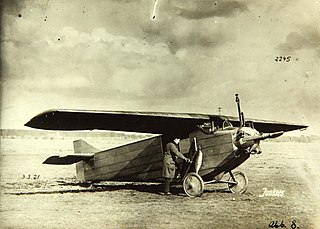
The Junkers K 16 was a small airliner produced in Germany in the early 1920s. It was a conventional, high-wing cantilever monoplane of all-metal construction, equipped with fixed, tailwheel undercarriage. The pilot sat in an open cockpit, while the two passengers were provided with an enclosed cabin within the fuselage. Shortly after the prototype flew, aircraft production in Germany was brought to a complete halt by the Allies, and the K 16 was quickly evacuated to the Netherlands to avoid confiscation. There, it was stored by Fokker until the restrictions were relaxed and work recommenced at Junkers' Dessau factory in 1924. By this time, however, the airline niche that the tiny K 16 had been intended to fill no longer existed, and the small number that were produced were mostly sold to private owners. Junkers entered two K 16s in the 1925 Deutsche Rundflug, with one machine winning second place in the competition.


















